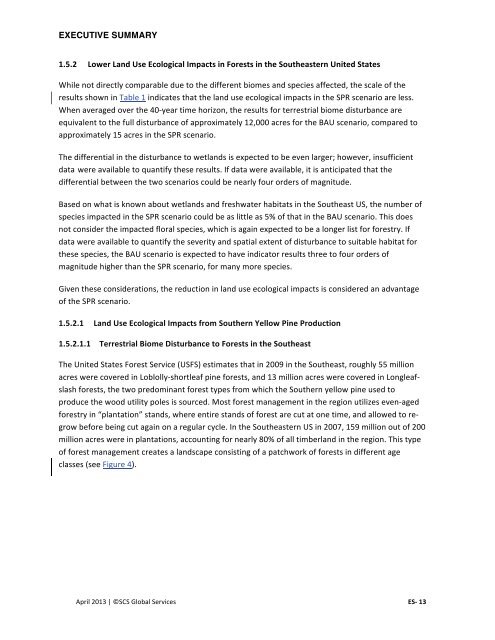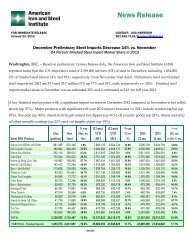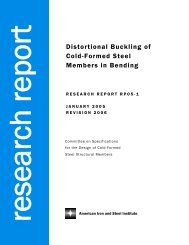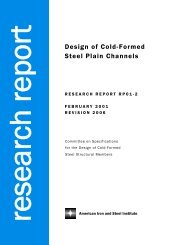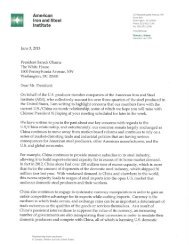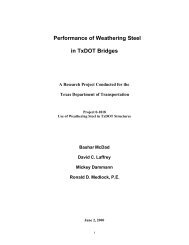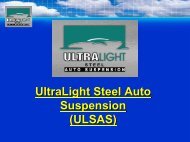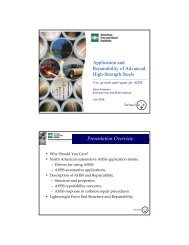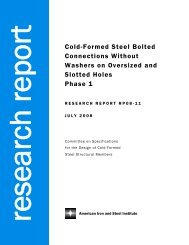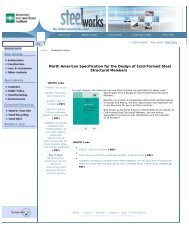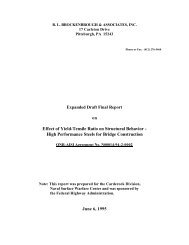Environmental Life Cycle Assessment of Southern Yellow Pine ...
Environmental Life Cycle Assessment of Southern Yellow Pine ...
Environmental Life Cycle Assessment of Southern Yellow Pine ...
You also want an ePaper? Increase the reach of your titles
YUMPU automatically turns print PDFs into web optimized ePapers that Google loves.
EXECUTIVE SUMMARY<br />
1.5.2 Lower Land Use Ecological Impacts in Forests in the Southeastern United States <br />
While not directly comparable due to the different biomes and species affected, the scale <strong>of</strong> the <br />
results shown in Table 1 indicates that the land use ecological impacts in the SPR scenario are less. <br />
When averaged over the 40-‐year time horizon, the results for terrestrial biome disturbance are <br />
equivalent to the full disturbance <strong>of</strong> approximately 12,000 acres for the BAU scenario, compared to <br />
approximately 15 acres in the SPR scenario. <br />
The differential in the disturbance to wetlands is expected to be even larger; however, insufficient <br />
data were available to quantify these results. If data were available, it is anticipated that the <br />
differential between the two scenarios could be nearly four orders <strong>of</strong> magnitude. <br />
Based on what is known about wetlands and freshwater habitats in the Southeast US, the number <strong>of</strong> <br />
species impacted in the SPR scenario could be as little as 5% <strong>of</strong> that in the BAU scenario. This does <br />
not consider the impacted floral species, which is again expected to be a longer list for forestry. If <br />
data were available to quantify the severity and spatial extent <strong>of</strong> disturbance to suitable habitat for <br />
these species, the BAU scenario is expected to have indicator results three to four orders <strong>of</strong> <br />
magnitude higher than the SPR scenario, for many more species. <br />
Given these considerations, the reduction in land use ecological impacts is considered an advantage <br />
<strong>of</strong> the SPR scenario. <br />
1.5.2.1 Land Use Ecological Impacts from <strong>Southern</strong> <strong>Yellow</strong> <strong>Pine</strong> Production <br />
1.5.2.1.1 Terrestrial Biome Disturbance to Forests in the Southeast <br />
The United States Forest Service (USFS) estimates that in 2009 in the Southeast, roughly 55 million <br />
acres were covered in Loblolly-‐shortleaf pine forests, and 13 million acres were covered in Longleaf-slash<br />
forests, the two predominant forest types from which the <strong>Southern</strong> yellow pine used to <br />
produce the wood utility poles is sourced. Most forest management in the region utilizes even-‐aged <br />
forestry in “plantation” stands, where entire stands <strong>of</strong> forest are cut at one time, and allowed to re-grow<br />
before being cut again on a regular cycle. In the Southeastern US in 2007, 159 million out <strong>of</strong> 200 <br />
million acres were in plantations, accounting for nearly 80% <strong>of</strong> all timberland in the region. This type <br />
<strong>of</strong> forest management creates a landscape consisting <strong>of</strong> a patchwork <strong>of</strong> forests in different age <br />
classes (see Figure 4). <br />
April 2013 | ©SCS Global Services <br />
ES-‐ 13


